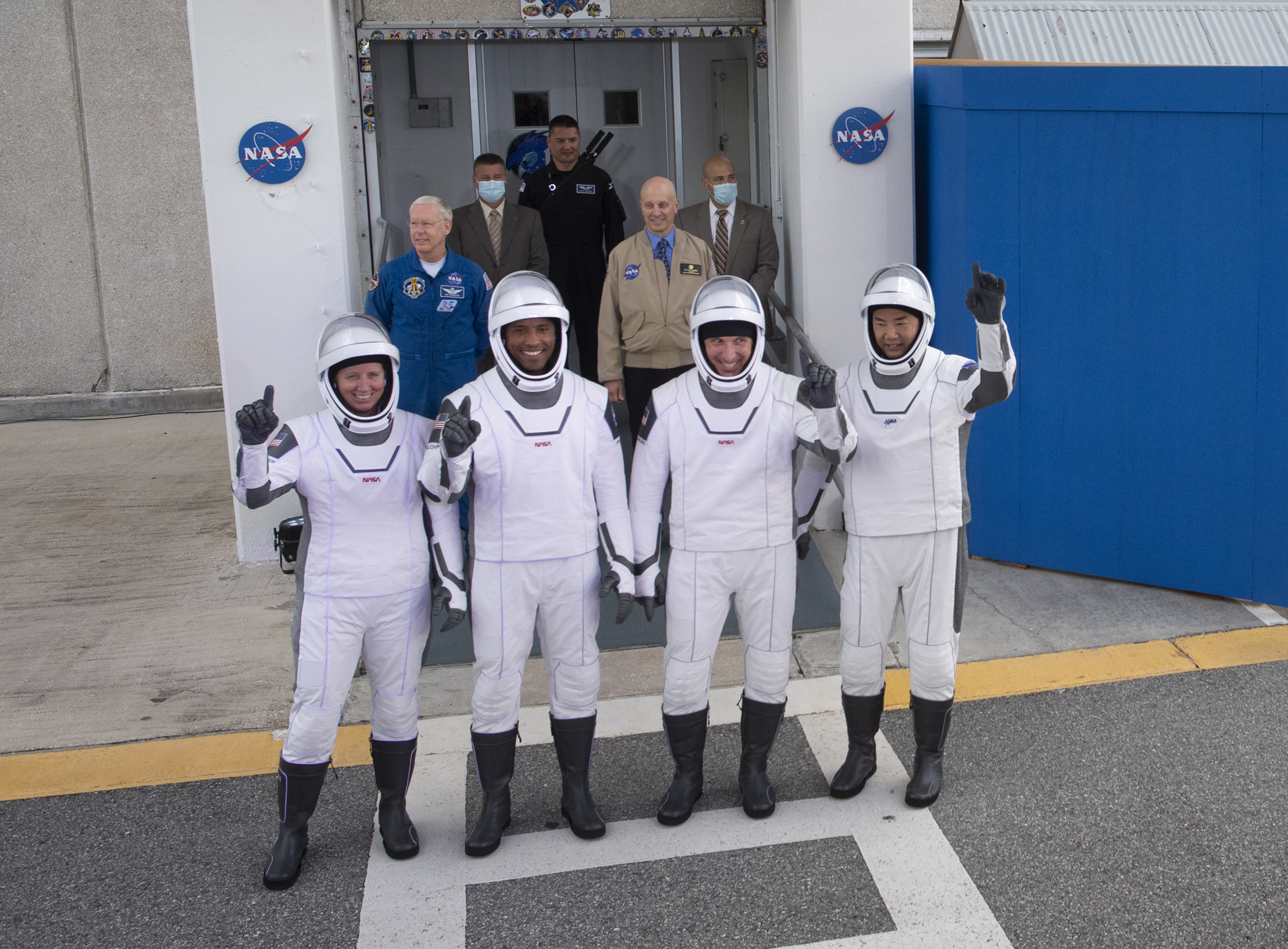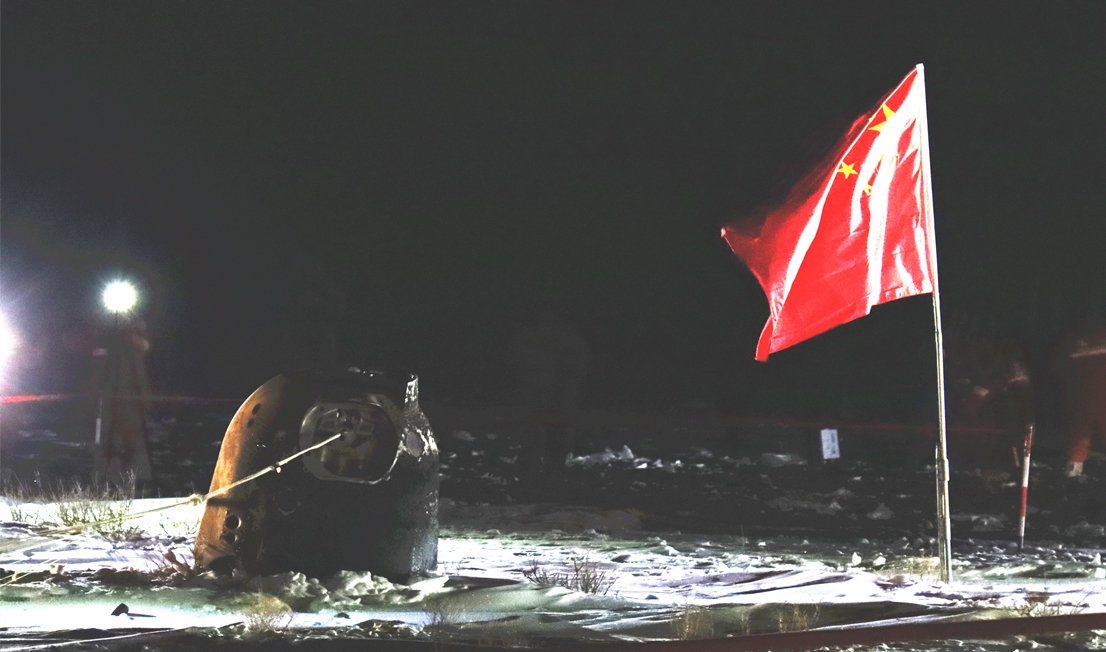The 10 biggest spaceflight stories of 2020

While 2020 was a difficult year around the world with the challenges that have come with the coronavirus pandemic, space continued to reach new heights.
This year alone, two spacecraft grabbed precious samples from asteroids, human spaceflight saw a new spacecraft, NASA astronaut Christina Koch set a new record for longest duration spaceflight made by a woman and SpaceX took major leaps forward in commercial spaceflight with the first commercial crewed launches.
Here's a rundown of the top 10 spaceflight stories that caught our attention this year.
1) SpaceX launches its first astronauts
After more than a decade of development, NASA's commercial crew program finally saw its first crewed flights. In May, SpaceX's Demo-2 successfully sent two astronauts to the International Space Station on a crewed test flight that lasted three months, using the company's Crew Dragon spacecraft.
The crew for this mission also conducted the first American splashdown in 45 years, the first since the Apollo program. The first operational flight of Crew Dragon came next in November, with Crew-1 launching to the orbiting complex with four astronauts on board. A video tour of the spacecraft, while en route, showcased a "Baby Yoda" plush and a bank of touchscreens.
2) China's Chang'e 5 moon sample return

In December, China's Chang'e 5 spacecraft returned the first lunar samples to Earth in 44 years. The mission collected the first moon rocks since the Soviet Union's Luna 24 mission, which returned about 6 ounces (170 grams) of material to Earth in 1976.
If all goes to plan, Chang'e-5 should collect roughly 4.4 lbs. (2 kilograms) of regolith or moon dust. The mission continues a long string of successful Chinese moon missions in recent years, including the first-ever far side of the moon mission, Chang'e 4, (which landed in 2019) and the Chang'e 3 mission which touched down on the moon in 2013 and is still going strong as of fall, 2020.
Get the Space.com Newsletter
Breaking space news, the latest updates on rocket launches, skywatching events and more!
3) Asteroid sample return missions
In October, NASA's first-ever sample return mission — OSIRIS-REx (Origins, Spectral Interpretation, Resource Identification, and Security-Regolith Explorer) touched down on asteroid Bennu. The probe picked up so much regolith that engineers had trouble closing the spacecraft's sampling mechanism; the mission's goal is to deliver 2.1 ounces (60 grams) of material to Earth, which will be delivered in 2023.
In the meantime, scientists can enjoy reviewing the results from Hayabusa2, the Japanese spacecraft that returned pieces of asteroid Ryugu to Earth this month.
4) Coronavirus effects on spaceflight
The coronavirus pandemic unexpectedly disrupted life all around Earth this year. Among its many effects, the pandemic has forced the space industry to find new ways to keep going amid new requirements for physical distancing and other measures designed to prevent the spread of the virus.
The International Space Station partners heightened the usual quarantine restrictions for incoming crews to prevent the virus from spreading to space, which has so far been successful. Most spaceflight companies and agencies managed to continue to move forward, albeit slowly. But negative effects accrued in other ways: astronomy conferences were forced to cancel in-person meetings and move online, the first launch of the Space Launch System moon megarocket was delayed until at least 202, and India avoided rocket launches for most of 2020 to cope with new industry requirements, among other effects.
5) Mars launches
While Europe and Russia rescheduled the launch of the ExoMars Rosalind Franklin rover to 2022 due to parachute issues and delays caused by the pandemic, three other Mars-bound launches went forward successfully in July 2020 while the Red Planet was close to Earth.
NASA launched the life-hunting Perseverance rover on a long-term quest to cache samples that they aim to eventually return to Earth for analysis; China launched its own ambitious Mars mission — the Tianwen-1 orbiter, lander and rover — in a first for the country's quickly growing space program. The United Arab Emirates also launched its own orbiter, called Hope, which they hope will inspire youth to join the space industry.
6) SpaceX's amazing Starship progress
SpaceX's Starship SN8 prototype took to the air for several minutes in an epic test flight earlier this month. While the spacecraft exploded upon landing, CEO Elon Musk was thrilled with the progress made with the test, tweeting "Mars, here we come!"
SpaceX considered the launch a success due to the complexity of SN8 over past prototypes, as it included stabilizing body flaps and three Raptor engines (as opposed to the one engine each predecessor flew.) The company's eventual goal is to use Starship to send people and cargo to the moon, Mars and other far-off space destinations. SpaceX hopes to have the spaceship ready to fly in the mid-2020s, perhaps launching a crewed Mars mission as early as 2024 or 2026.
7) SpaceX caught a nose cone for the first time
SpaceX took another leap forward in rocket reusability this July, when the company caught both halves of a Falcon 9 rocket's falling payload fairing. The company has now performed dozens of booster touchdowns in an effort to reduce the cost of spaceflight for missions to Earth orbit and (they hope) eventually, more distant destinations such as Mars.
The upper stage of Falcon 9 and its heavier counterpart, Falcon Heavy, are expendable — but the rest of the spaceflight system is expected to be reusable.
8) Christina Koch returns from (almost) a year in space
NASA astronaut Christina Koch landed safely on Earth in February after setting a new long-duration record for women astronauts: 328 days on a single mission, nearly a year in space. Koch's record-setting mission included performing the first all-woman spacewalk (one of six extra-vehicular activities (EVAs) the astronaut performed) and participating in more than 210 science investigations.
Koch initially launched for a six-month mission, but her stay was almost doubled as NASA and its international partners sought to accumulate data on longer-duration missions.
9) 20th years of astronauts on ISS
The International Space Station will likely expand its mandate as the orbiting laboratory celebrated 20 years of continuous crew occupation in November. For the better part of a generation, the space station has been home to dozens of astronauts who have performed spacewalks, conducted thousands of experiments and learned the ropes of long-term duration space missions. And more is still to come.
The space station agreement likely will be extended to 2028 from its current end point of 2024, allowing NASA and its international partners the chance to perform science with the station and to use it as commercial operations continue to escalate. Already, Houston-based company Axiom Space plans to fly a commercial module and commercial astronauts in 2021.
10) NASA announces Artemis astronauts
While NASA's Artemis program is suffering from delays with the Space Launch System rocket, NASA did name ashortlist of moonbound astronauts for its goal of landing humans on the lunar surface by 2024 as part of the Artemis III mission.
The "Artemis team" has 18 astronauts, including the person who will be the first woman to land on the moon. International participation will also be a feature of the program; late in December, the Canadian Space Agency announced one of its astronauts would participate in the lunar orbital dress rehearsal, Artemis II.
Follow Elizabeth Howell on Twitter @howellspace. Follow us on Twitter @Spacedotcom and on Facebook.
Join our Space Forums to keep talking space on the latest missions, night sky and more! And if you have a news tip, correction or comment, let us know at: community@space.com.

Elizabeth Howell (she/her), Ph.D., was a staff writer in the spaceflight channel between 2022 and 2024 specializing in Canadian space news. She was contributing writer for Space.com for 10 years from 2012 to 2024. Elizabeth's reporting includes multiple exclusives with the White House, leading world coverage about a lost-and-found space tomato on the International Space Station, witnessing five human spaceflight launches on two continents, flying parabolic, working inside a spacesuit, and participating in a simulated Mars mission. Her latest book, "Why Am I Taller?" (ECW Press, 2022) is co-written with astronaut Dave Williams.









